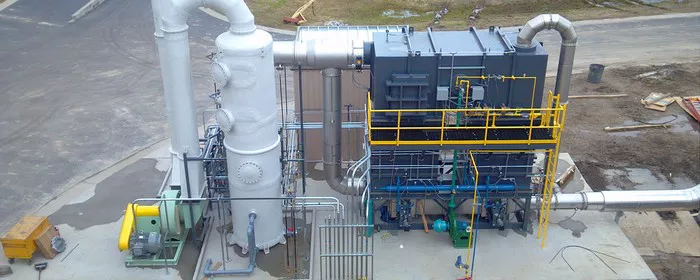In today’s industrial landscape, environmental regulations are becoming increasingly stringent, necessitating the use of innovative technologies to mitigate pollution. One such technology gaining prominence is the scrubber. In this comprehensive guide, we delve into what scrubbers are, how they function, and their significance in industrial operations.
What is a Scrubber?
A scrubber is an air pollution control device utilized in industrial settings to remove particulate matter, gases, or both from exhaust streams emitted during various processes. These emissions often contain harmful pollutants such as sulfur dioxide (SO2), nitrogen oxides (NOx), particulate matter, and volatile organic compounds (VOCs), which can have detrimental effects on human health and the environment.
Types of Scrubbers
Scrubbers come in various types, each designed to address specific pollutants and operational requirements:
1. Wet Scrubbers: These scrubbers use a liquid (often water) to trap and remove pollutants from the exhaust gas stream. The gas is forced through a scrubbing solution, where pollutants are absorbed or chemically reacted with the liquid.
2. Dry Scrubbers: Unlike wet scrubbers, dry scrubbers utilize a dry sorbent or absorbent material to remove pollutants from the gas stream. Common dry scrubbing agents include lime, limestone, and activated carbon.
3. Gas Scrubbers: Gas scrubbers are specifically designed to target gaseous pollutants, such as sulfur dioxide and nitrogen oxides, using various chemical reactions or absorption processes.
4. Particulate Scrubbers: Particulate scrubbers, as the name suggests, focus on removing solid particulate matter from the exhaust stream, typically through mechanisms like filtration or electrostatic precipitation.
How Do Scrubbers Work?
The operation of a scrubber depends on its type, but the basic principles remain consistent across different designs:
1. Particle/Gas Contact: In a wet scrubber, the polluted gas stream is brought into contact with the scrubbing liquid. This contact facilitates the transfer of pollutants from the gas phase to the liquid phase.
2. Chemical Reaction/Absorption: Once in contact with the scrubbing liquid or sorbent material, pollutants undergo chemical reactions or are absorbed, effectively removing them from the gas stream.
3. Separation: After the pollutants are captured, the scrubbed gas undergoes a separation process to remove any remaining liquid or solid particles before being discharged into the atmosphere.
Importance of Scrubbers in Industrial Processes
Scrubbers play a vital role in ensuring compliance with environmental regulations and minimizing the impact of industrial activities on air quality. Some key reasons why scrubbers are indispensable in industrial processes include:
1. Pollution Control: By effectively removing pollutants from exhaust streams, scrubbers help reduce emissions of harmful substances, thereby mitigating environmental pollution and its associated health risks.
2. Regulatory Compliance: Many countries have stringent regulations governing air emissions from industrial sources. Installing scrubbers enables companies to meet these regulatory requirements and avoid potential fines or legal consequences.
3. Improved Public Health: By reducing the release of pollutants into the atmosphere, scrubbers contribute to improving air quality and protecting public health, especially in areas near industrial facilities where air pollution concentrations can be elevated.
4. Enhanced Sustainability: Adopting scrubber technology demonstrates a commitment to environmental stewardship and sustainable industrial practices, which can enhance a company’s reputation and attractiveness to environmentally conscious consumers and investors.
Conclusion
Scrubbers are indispensable tools for mitigating air pollution in industrial settings. By employing scrubber technology, industries can achieve regulatory compliance, protect public health, and demonstrate their commitment to environmental sustainability. Understanding the various types of scrubbers and their operation is crucial for maximizing their effectiveness in reducing emissions and safeguarding the environment for future generations.
FAQs
Q1: How do scrubbers contribute to reducing sulfur emissions?
A1: Scrubbers, particularly wet scrubbers, remove sulfur dioxide (SO2) emissions by reacting with alkaline substances in the scrubbing liquid to form compounds like calcium sulfite or sulfate, which are then removed from the gas stream.
Q2: Are scrubbers only used in large industrial facilities?
A2: While scrubbers are commonly employed in large industrial plants such as power plants, refineries, and steel mills, they can also be used in smaller-scale operations, depending on the nature of the emissions and regulatory requirements.
Q3: Can scrubbers remove all types of pollutants from exhaust streams?
A3: Scrubbers are effective at removing a wide range of pollutants, including gases (e.g., SO2, NOx) and particulate matter. However, the specific design and configuration of the scrubber will determine its efficiency in removing different pollutants.

